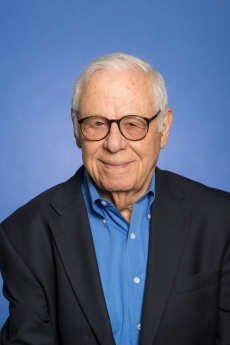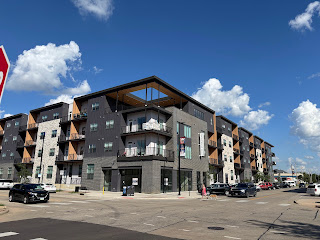| Source: bikechicago.com |
- the presence of bicycles makes cars drive more cautiously, improving safety for pedestrians and other cars as well as the bikes
- bicycles take up less room than cars do, both when parked and in traffic
- bicycles decrease gasoline consumption and greenhouse gas emissions; and
- a city that is designed to welcome bikes is also designed to encourage urban life.
Another prong is road design explicitly designed to accommodate bikes. This can include bike lanes, although Speck--with good reason--advises against them in downtown areas. When I was growing up in the 1970s, my hometown of Wheaton, Illinois, added bike lanes to a number of thoroughfares, but allowed parking on them so they were rather hard to use. So I was always rather cynical about bike lanes until we visited Colorado in 2009. You'd believe anything I told you about Boulder, but, Fort Collins, dear readers. Fort Collins. Fort Collins has bike lanes in useful places, and drivers respect them. It probably took awhile for that culture to get clarified, but clarified it is and everyone seems to get along. Cedar Rapids has started including bike lanes on streets, including 3rd Avenue SE from 3rd to 10th Streets. It starts out absurdly wide, and not everyone recognizes this as a bike lane despite the snazzy logo:
(approaching 6th St; First Presbyterian Church parking lot is to the right)
Above 8th Street the bike lane narrows to traditional width.
(approaching 10th Street, next to the oral surgeons' office)
Once across 10th Street, you're on your own, at least for the time being.
From reading Speck's book I know that this is a sharrow:
(2nd Av SE, in the 800 block heading downtown. Firestone's on the left,
one of the medical parking garages on the right)
A sharrow is an extra-wide lane intended to be shared by cars and bikes. I hadn't noticed when driving that it was extra-wide but I paced it off this morning and indeed it is 6 Bruce steps across, versus 4.5 for the left-turn lane coming the other direction and 5 for the right-turn lane by the curb.
The other prong is "urbanism," a mix of people going a variety of places. Speck quotes a study that attributes high rates of cycling in Canada to "higher urban densities and mixed-use development, shorter trip distances... [and] higher costs of owning, driving and parking a car" (Pucher and Buehler 265, quoted at Speck 192). This is not the place to go into why this is a good goal for development anyway; suffice to say that bikes help urbanism, and urbanism helps bikes.
Different kinds of people living well together--that's what this blog is all about. A major obstacle to that goal in general is American society's attitude towards difference. We don't handle oddness well. Without drawing specific comparisons between very different phenomena, I'd have to say a lot of my blog posts start from that premise. Occasional brush fires of hostility on talk radio and in the letters-to-the-editor column of the Gazette amount to: If 95 percent of us (probably a low estimate in Cedar Rapids) drive cars to work, what's up with the 5 percent who don't? And why don't they get out of our way?
When other people become the enemy, we're all in trouble. This world doesn't have to be a Hobbesian hell, and we shouldn't act like it is. A world of Us against Them is only the team-sport version of the world of all against all.
A bigger obstacle is safety. As if we needed reminding of that. This week came the tragic news of a U.S. Marine training for RAGBRAI struck from behind by a car near his home in Boone, Iowa. The accident is still under investigation, and I won't presume to draw conclusions from one incident. But everyone, in which I hasten to include myself before I launch into this rant, could act more safely on the roads, whatever their form of transportation. Bikes are smaller than cars and inherently vulnerable, and riders make themselves moreso when they flout traffic laws, cut in front of cars, and otherwise get in their way. Take out the earbuds, and for pity's (and your brain's) sake wear a helmet. Drivers of cars need not to be aggressive, no matter how late they're running or how important they think they are. Use turn signals, yield right of way, don't crowd cyclists, don't lane jockey, pay attention to the road... really this all common sense and shouldn't be an imposition on anyone. And everyone, please, PUT THE PHONES AWAY. Whatever you're saying or texting surely can wait.
I am decidedly against vehicular cycling, which term I first encountered in Speck's book, but which phenomenon has already made it to my sleepy small city. The idea is that bikes are vehicles, just like cars, and therefore should act like cars at all times, including taking up an entire lane. I am not at war with the whole human race, and see no value in being obnoxious. OK, there is some value, because there are data (which I haven't seen) which show this is safer than riding on the side. I still say that, just as I call for drivers to accommodate cyclists, living well together means cyclists need to accommodate automobiles. It may be that that polluting jerk behind you needs to get out of his carbonmobile and get some exercise, but I don't think getting in his way is going to make that happen... more likely the opposite. It may also be that the polluting jerk behind you is transporting a sick child or a woman in labor. Ever think of that?
On the other hand, when I am a good world citizen, cowering with my bike along the side of the street, I confront the phenomenon of turn lanes. The world is full of turn lanes. If I'm going straight, that means I have to cut across the right-turn lane, and/or figure out where to stop when there's a red light. If I'm turning left, that means... well, you get the idea. Anyone figured out this conundrum?
SOURCES
Joel Aschbrenner, "Boone Cyclist Killed Training for RAGBRAI," Des Moines Register, 27 June 2013 [http://ragbrai.com/2013/06/27/boone-cyclist-killed-training-for-ragbrai/].
Sophie Egan, "Safer Roads for Cyclists," New York Times, 25 June 2013, D6.
John Pucher and Ralph Buehler, "Why Canadians Cycle More Than Americans: A Comparative Analysis of Bicycling Trends and Policies," Transport Policy 13 (2006): 265-279.
Jeff Speck, Walkable City: How Downtown Can Save America, One Step at a Time. New York: Farrar Straus and Giroux, 2011.
(clip art swiped from thegraphicsfairy.com)




























